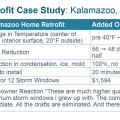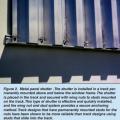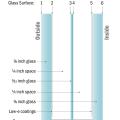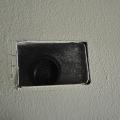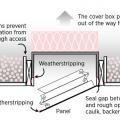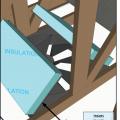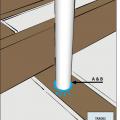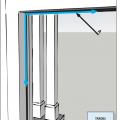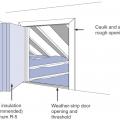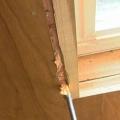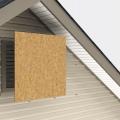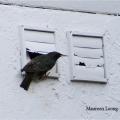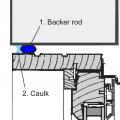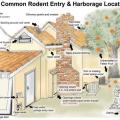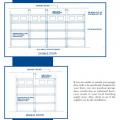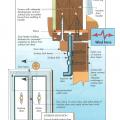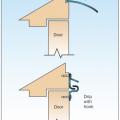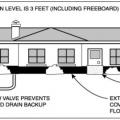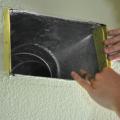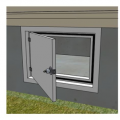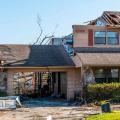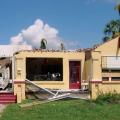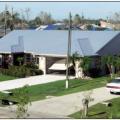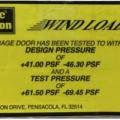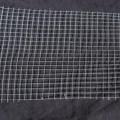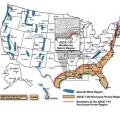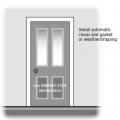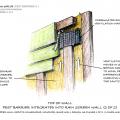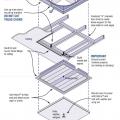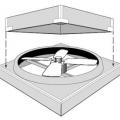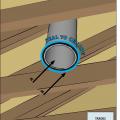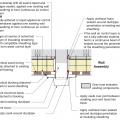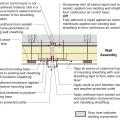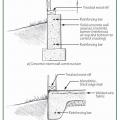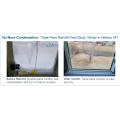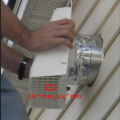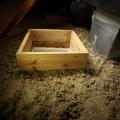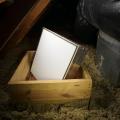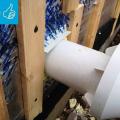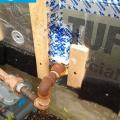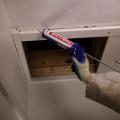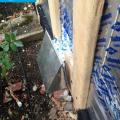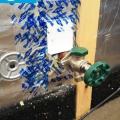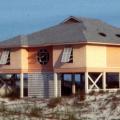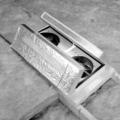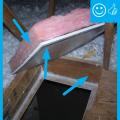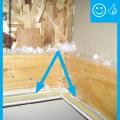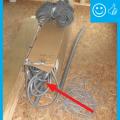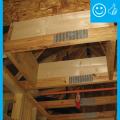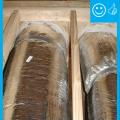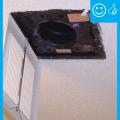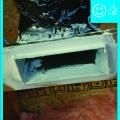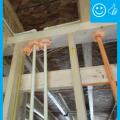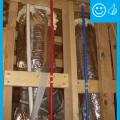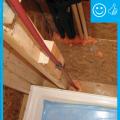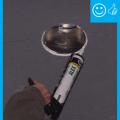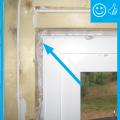Showing results 1 - 100 of 175
A Kalamazoo homeowner reduced wintertime chill, condensation, and snowblower noise by installing high-performance interior storm windows
A metal storm panel is installed in a track permanently mounted above and below the window frame and secured with wing nuts to studs mounted on the track.
A new high-performance window will be installed in the rough opening of this existing home
A piece of siding is used as sill extension and to provide slope in the opening for the window, which is deeper because exterior rigid foam has been added
A thin-triple window uses a narrow interior glass pane and narrower gaps between panels often filled with krypton, rather than argon gas, to achieve triple-pane performance with an IGU that fits in a double-pane window frame
Accordion-type hurricane shutters protect sliding glass doors from high winds and wind-borne debris.
Air seal around all duct shafts and flues installed through ceilings, walls, or flooring to keep conditioned air from leaking into unconditioned space.
Air seal around kitchen and bathroom exhaust fans to keep conditioned air from leaking into unconditioned space.
Air seal door and window rough openings with backer rod, caulk, or nonexpanding foam
Air seal duct boot to ceiling by installing fiberglass mesh tape and mastic over seam
Air-seal around all plumbing and piping installed through walls, ceilings, and flooring adjacent to unconditioned space to prevent air leakage.
Air-seal around all wiring installed through walls, ceilings, and flooring to keep conditioned air from leaking into unconditioned space.
Air-seal around recessed can light fixtures that are installed through ceilings to keep conditioned air from leaking into unconditioned space.
An interior shade that closes from the bottom up can work in conjunction with an exterior overhang to block lower-angle sunlight while still allowing view through the upper portion of the window that is shaded by the overhang.
Anchorage failure in sliding glass doors due to negative pressures from hurricane force winds.
Attach a strong permanent cover to gable end vents before a severe storm strikes to prevent moisture intrusion.
Closed-cell backer rod is installed for air-sealing window and door rough openings.
Comparison of three homes showing the amount of wall insulation needed to achieve a whole-wall insulation value of R-19 when the wall has double- versus triple-pane windows
Drip flashing at the door head and drip flashing with hook at the head help to keep out wind-driven rain.
Duct boot is air sealed to ceiling by covering the seam with fiberglass mesh tape and mastic
Duct/pipe penetration with metal cap flashing and wood blocking for trim attachment
ENERGY STAR Certification Criteria for Residential Windows, Doors, and Skylights, Version 7.0, effective 10-23-23
Even with R-30 of insulation in the wall, its overall R-value is R-5 if it has single-pane windows; triple-pane windows bring that up to R-16
Exterior shading devices such as these Bahama shutters can significantly increase the hours of safety provided by a home during an extreme heat event.
Failure of a garage door due to pressure differences under hurricane force wind conditions resulting in damage to the house.
Failure of Roof Structure from Pressurization Due to Window Failure During a Hurricane.
Fiberglass mesh tape is installed around a duct boot in preparation for air sealing with mastic
Hardware cloth, also known as wire mesh, can be used to prevent rodents from entering the home
Hurricane force winds that breach external windows and doors can then cause failure of the entire building due to internal pressures on walls and roof.
Hurricane shutter styles include colonial, Bahama, roll-up, and accordion shutters.
In a comparison of two homes that were identical except for windows, the home with thin-triple-pane windows showed averaged winter heating savings of 12% annually, average cooling season savings of 28%, and peak savings of 17% to 33% compared to the home
In areas prone to high winds and hurricanes, double vertical “jack trim” and horizontal “header” and “sill” studs are recommended on all sides of window and door openings.
In flood-prone areas, a roof egress opening can be installed; if more than 44 inches above the floor or landing, install permanent access via a ladder, stairs, or ramp
Install an ENERGY STAR labeled insulated door with an automatic closer. Weather strip the door frame
Install mesh insect barrier along the tops and bottoms of the rain screen behind the exterior cladding of above-grade walls.
Install termite shields and use solid concrete or filled concrete block for the top of foundation walls to deter termites and other pests
Light tubes adjacent to unconditioned space include lens separating unconditioned and conditioned space and are fully gasketed
Low-E storm windows are a cost-effective retrofit that is easy to install and can cut heating and cooling bills 10% to 33%.
Plan view of duct or pipe penetration through exterior wall showing flashing and air sealing details
Plan view of electric box installation in exterior wall showing flashing and air sealing details
Provide flashing and sealing integrated with the air and water control layers for vents and other roof penetrations
Reinforce concrete slab and foundation walls to minimize future cracks that could let in pests
Replacing double-pane windows with triple-pane windows can significantly reduce winter-time condensation by warming the interior surface of the windows
Right - A durable, vented cover is installed over this exhaust duct to prevent bird and pest entry
Right - The attic access panel is insulated and weather stripped and a dam is built to hold back the blown attic floor insulation
Right - The duct shows redundant sealing including the caulk, tape, and flashing
Right - The pipe penetration is properly flashed and furring strips are installed on each side in preparation for installing cladding
Right - The water and air control layers are properly integrated around the hose bib
Right - These homes have hurricane shutters to protect against high winds and to provide solar control.
Right - This ceiling-mounted mini whole-house fan has built-in insulated covers to reduce heat loss when the fan is not in use
Right - This duct penetration is properly flashed and integrated with the taped, foil-faced foam sheathing layer, which serves as the air and water barrier
Right - This opening in the foundation wall around this pipe was filled with wire mesh then sealed with spray foam to prevent rodent and insect entry
Right – Attic access hatch has been properly insulated by attaching a fiberglass batt, gasketed, and opening has blocking
Right – Attic access door has foam and rubber weatherstripping installed that remains in contact when closed.
Right – Backer-rod is a foam product available in various diameters that can be used to air-seal openings around doors and windows.
Right – Blocking has been installed around the perimeter of this attic access to prevent insulation falling into the house
Right – Chase capped with rigid air barrier and duct work penetrations properly sealed
Right – Fan with a cleanly cut and properly sized hole has been air sealed to drywall
Right – Foundation drainage mat was installed over the waterproof membrane that covers the sealed crawlspace window
Right – The rough opening around the window has been filled with low-expansion foam to air seal.

